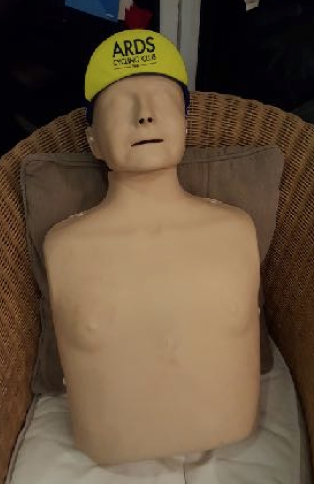Here is a summary of the slides used by Conn Russell in his “Cycling First Aid” presentation to the club in November 2016. Many thanks to Conn for this.
• • • • • •
Content
- General care of casualty
- Specific common cycling injuries
- Other medical conditions
- First aid kits
- Basic life support & AEDs
- How to get formal certification
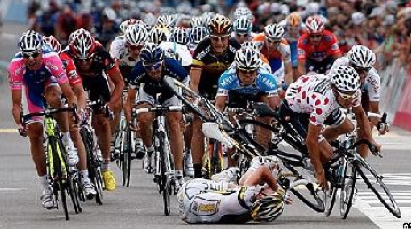
• • • • • •
Useful for
- Marshalling at open / club races
- Club runs
- Spin classes
- Everyday life
• • • • • •
Bystander first aid & the law. Liability?
- “Although there have been a few cases in the United Kingdom where a claim has been brought against a ‘rescuer’, there have been no reported cases where a victim has successfully sued someone who came to his aid in an emergency”
- You are judged against standard expected for your level of expertise / training
• • • • • •
Prevention
- Helmet
- Mentoring by experienced cyclist Anticipate stupidity
- Equipment
- LIGHTS
• • • • • •
General care of casualty
- Personal safety
- Get help
- Keep warm
- Prevent getting back on bike until sensible
- Fluids, sugars
- Information (Allergies, meds, illnesses)
- Prevent secondary injury
• • • • • •
Common Injuries
- Road rash
- Sprains / soft tissue injury
- Head
- Clavicle / shoulder
- Hand (scaphoid)
• • • • • • •
Simple Pain Relief
- Buy cheapest versions!
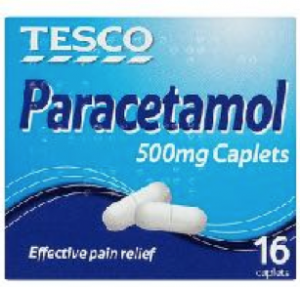
- Paracetamol 1g (2 tablets) 6 hourly
And
- Ibuprofen 200mg-400mg 6 hourly
OR
- Diclofenac 50mg 8hourly
• • • • • •
Don’t
• Overdose on paracetamol (read the packet!)
• Use a friend’s prescription meds
• Take stronger painkillers unless necessary
• • • • • •
Road Rash
• Common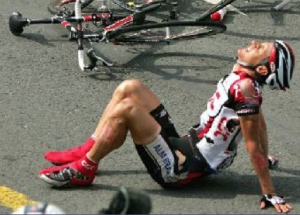
• Painful
• Risk of infection / scarring
• Can distract from deeper injury
• • • • •
Treatment
- Gentle flush with saline / water
- Antiseptic cream
- Cover with dry dressing if possible
- No steroid / anti-inflammatory cream or gel
- A&E if extensive
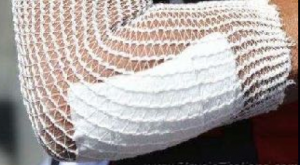
• • • • • •
General treatment
- Rest
- Ice (frozen peas in tea towel)
- Compression (gentle)
- Elevation
• • • • •
Is it frectured dactor?
- Severe pain
- Deformity
- Crepitus (crunching)
- Loss of movement / abnormal movement
- Persistent swelling / bruising?
• • • • • •
Head injuries
- Most common cause of fatal injury (70%)
- Often associated with neck injury
- Concussion
- Helmet protects to some degree
• • • • • •
Serious accidents
The Royal Society for the Prevention of Accidents reports that –
- Around 75% of fatal or serious cyclist accidents occur in urban areas
- Around half of cyclist fatalities occur on rural roads
- 75% happen at, or near, a road junction
- 80% occur in daylight
- 80% of cyclist casualties are male
- Almost one quarter of the cyclists killed or injured are children
- Around three quarters of cyclists killed have major head injuries
• • • • • •
Head injury
- Severe head injury often fatal despite treatment
- Concussion is increasingly recognised in other sports
- Some simple principles to prevent complications
- Avoid worsening unstable neck injury
- Recognise tongue blocking throat (airway)
• • • • • •
Spinal Injuries
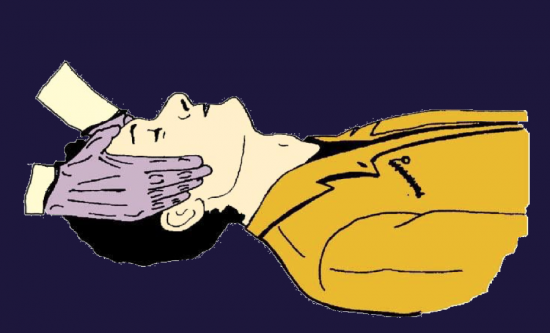
• • • • • •
Tongue Blocking Airway
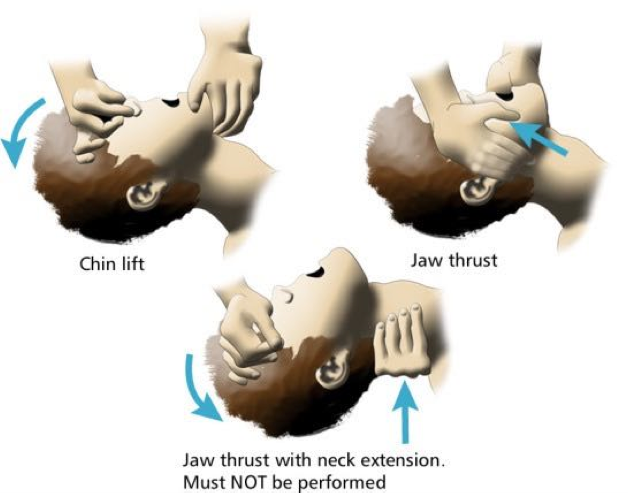
• • • • • •
Fractured clavicle
- Collarbone, connects breastbone to shoulder
- Protects upper lungs and blood vessels
- Very common with direct fall or fall onto outstretched hand
- Pain & deformity
- Shoulder and clavicle injuries look similar, immediate treatment is the same
• • • • • •
Treatment
- Icepack
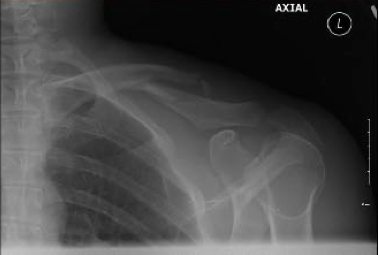
- Sling
- Xray
- Surgery?
• • • • • •
Scaphoid Fracture
- Fall on outstretched hand
- Often doesn’t show on initial X-ray
- Persistent pain suggests problem
- Short arm plaster
- Repeat X-ray / CT
• • • • • •
Cycling and other illnesses
- Viral illnesses
- Asthma
- Diabetes
- Angina / heart trouble
• • • • • •
Viral illnesses
- Generally avoid cycling if chest symptoms
- Heart rate
• • • • •
Diabetes
- Common in cyclists
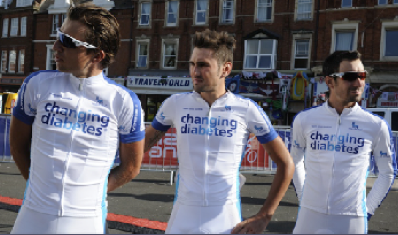
- Hypoglycaemia is main risk
- Often carry testing kit
- Presents with confusion etc
- If in doubt – give sugar
• • • • • •
Heart problems
- Angina / myocardial infarction
- Fast irregular heart rate (AF)
- Often presents with nausea, “indigestion”, breathlessness or dizziness
- Do not allow to continue cycling
- Sit down, elevate legs, get help
• • • • • •
Asthma
- Very common
- Usually will carry inhalers
- Use blue inhaler for wheezy attack
• • • • • •
First aid cover for Ards CC
- Open races – St John’s
- Town centre races – rely on proximity of Ards ambulance station
- Club races / TTs – NIAS for backup
- First aid rota
- Cycling Ireland has guidance in the annual handbook and on their website.
• • • • • •
Basic life support
- More likely to be of use outside cycling
- Should be taught to all
- Compression only CPR?
- Many useful online resources & Apps
• • • • • •
Out of hospital cardiac arrest
- 80% occur at home
- Most common cause is heart attack
- Survival likely to be much higher with immediate bystander CPR until arrival of trained assistance (or defibrillator)
- Only 43% bystander CPR in UK
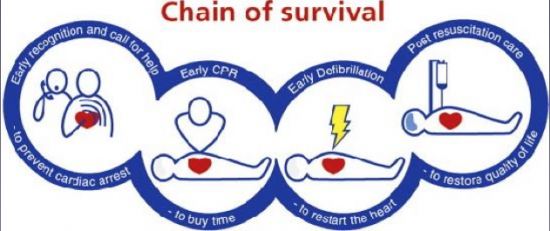
• • • • • •
Cardio Pulmonary Resuscitation (CPR)
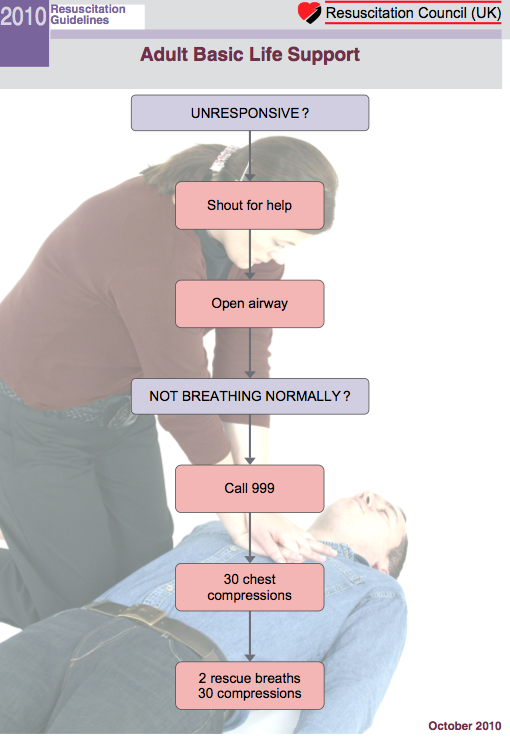
• • • • • •
CPR
- Depress hands 5-6cm
- Ideal rate is 100-120 compressions per minute
- 2 rescue breaths every 30 compressions if able & willing
- Send for AED if possible
- Continue until help arrives / signs of life
• • • • • •
Mouth to mouth
- Better chance of survival with mouth to mouth in addition to chest compressions
- Many will not perform on strangers
- Chest compressions much better than nothing
- Pocket masks
• • • • • •
Hand Position – Adult
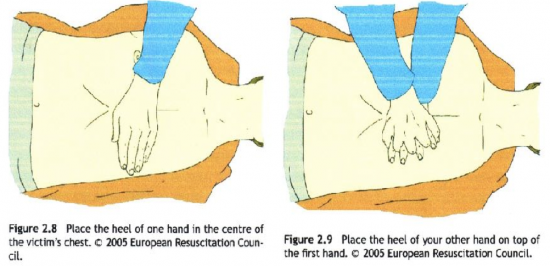
• • • • • •
Automated external defibrillators (AEDs)
- Present in many public places
- Main chance of survival in cardiac arrest is delivering early shock for ventricular fibrillation (VF)
- Turn on
- Apply pads
- Follow instructions
• • • • • •
Further resources
- St Johns Ambulance (web & free app)
- British heart foundation
• • • • •
Formal first aid training
- Mainly “first aid for the workplace”
- Some aimed at sport
- Group discount
- Certificate, need to renew
- Liability?
• • • • • •
Thanks!
